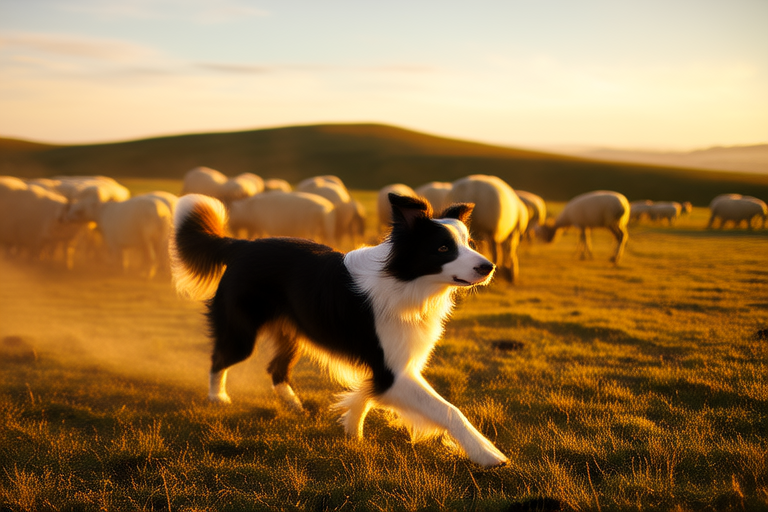
Border Collies: The Ultimate Herders
Border collies are renowned for their exceptional herding instincts, making them one of the most versatile and intelligent dog breeds. Their natural behaviors, intelligence, training requirements, and historical background have made them indispensable in various roles, from traditional herding to search and rescue operations. This article delves into the unique characteristics of border collies, highlighting their herding techniques, physical attributes, and how their instincts manifest in everyday life.
Historical Background
The border collie breed originated along the Anglo-Scottish border, where they were bred for their herding abilities. Their ancestors were likely a mix of collies, sheepdogs, and other herding breeds. Border collies were initially used to manage large flocks of sheep in rugged terrain. Their intelligence, agility, and stamina made them ideal for this task. Over time, the breed’s reputation spread, and they became popular among farmers and shepherds worldwide. Today, border collies are recognized for their versatility and are often used in competitions, as service dogs, and even in law enforcement.
Natural Behaviors and Intelligence
Border collies possess an innate desire to work and herd, which is evident from an early age. They are highly observant and quick learners, able to understand complex commands and respond to subtle cues. Their intelligence allows them to adapt to different situations and environments, making them excellent problem-solvers. Border collies are also known for their strong prey drive, which can be harnessed for herding purposes. However, this trait can sometimes lead to challenges when interacting with small animals or birds.
Training Requirements
Due to their high energy levels and strong instincts, border collies require consistent and challenging training. Early socialization and obedience training are crucial to ensure they become well-adjusted and responsive companions. Positive reinforcement methods, such as treats and praise, are highly effective in motivating border collies. Training sessions should be engaging and mentally stimulating, as border collies thrive on mental challenges. It’s important to provide opportunities for physical exercise and mental stimulation to prevent boredom and destructive behavior.
Herding Techniques
Border collies employ a variety of herding techniques, depending on the situation and the livestock being managed. One of their most distinctive behaviors is the “eye,” where they fixate on the target with intense focus. This technique helps them maintain control over the flock without causing unnecessary stress. Another common method is the “bark,” where the dog uses its voice to guide the animals. Border collies may also use body language, such as crouching low or moving in a particular direction, to direct the flock.
Physical Attributes Supporting Herding Actions
Border collies possess several physical attributes that make them ideal herders. Their medium-sized, athletic build allows them to move quickly and efficiently across varied terrains. Their deep chests provide ample room for lung capacity, enabling them to maintain stamina during long herding sessions. Additionally, their agile bodies allow them to maneuver around obstacles and closely follow the movements of the flock. Border collies also have keen eyesight and hearing, which help them detect changes in the flock’s behavior and respond accordingly.
Instincts in Everyday Life
When not actively herding, border collies’ instincts can manifest in various ways. They may chase after moving objects, such as cars or bicycles, or attempt to herd children or other pets. These behaviors are often misinterpreted as aggression but are usually a result of their strong herding drive. Owners should provide outlets for their dog’s energy and mental stimulation to prevent unwanted behaviors. For example, playing fetch or engaging in interactive games can help satisfy their need for activity and mental engagement.
Comparisons with Other Breeds
While many breeds exhibit herding behaviors, border collies stand out due to their exceptional intelligence and versatility. Australian shepherds, another popular herding breed, share some similarities with border collies, such as their strong work ethic and loyalty. However, border collies tend to be more focused and driven, often requiring more mental stimulation to stay engaged. Cattle dogs, like Australian cattle dogs, are also known for their herding abilities but typically work in larger, more open spaces. Border collies excel in smaller, more confined areas, making them ideal for managing flocks of sheep or goats.
Tips for Owners
Managing and channeling border collies’ instincts positively requires patience, consistency, and creativity. Owners should provide regular exercise and mental stimulation to keep their dogs happy and well-behaved. Engaging in activities such as agility training, flyball, or disc games can help satisfy their need for activity and challenge. Additionally, incorporating herding exercises into daily routines can provide an outlet for their natural instincts. It’s essential to establish clear boundaries and expectations, using positive reinforcement to encourage desired behaviors. Seeking professional guidance from trainers experienced in working with border collies can also be beneficial.
Conclusion
Border collies’ exceptional herding instincts make them one of the most versatile and intelligent dog breeds. Their natural behaviors, intelligence, and physical attributes have made them invaluable in various roles, from traditional herding to search and rescue operations. By understanding and managing their instincts, owners can create a fulfilling and enriching environment for their border collies. With proper training and care, border collies can be loyal, loving companions who bring joy and purpose to their owners’ lives.



